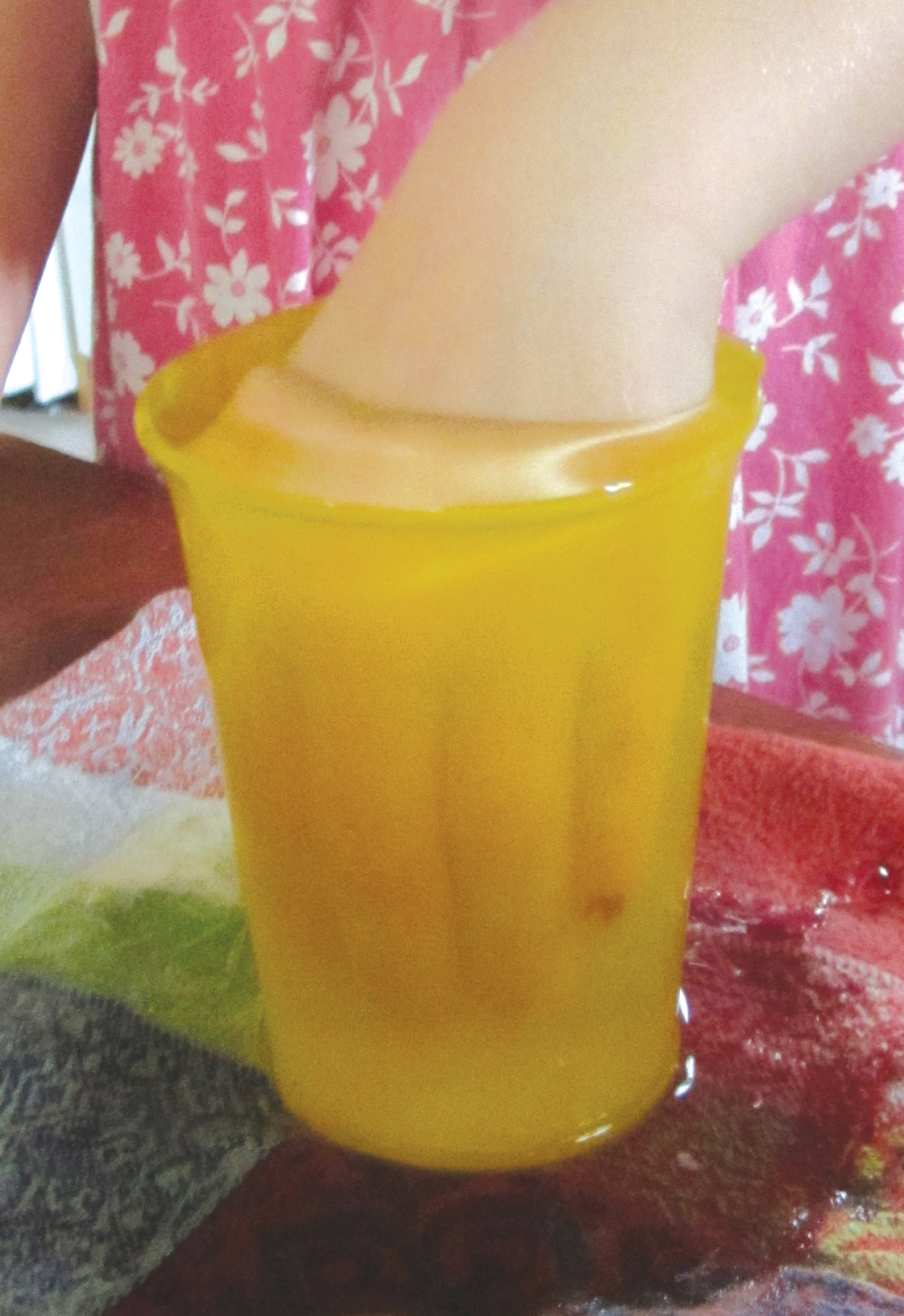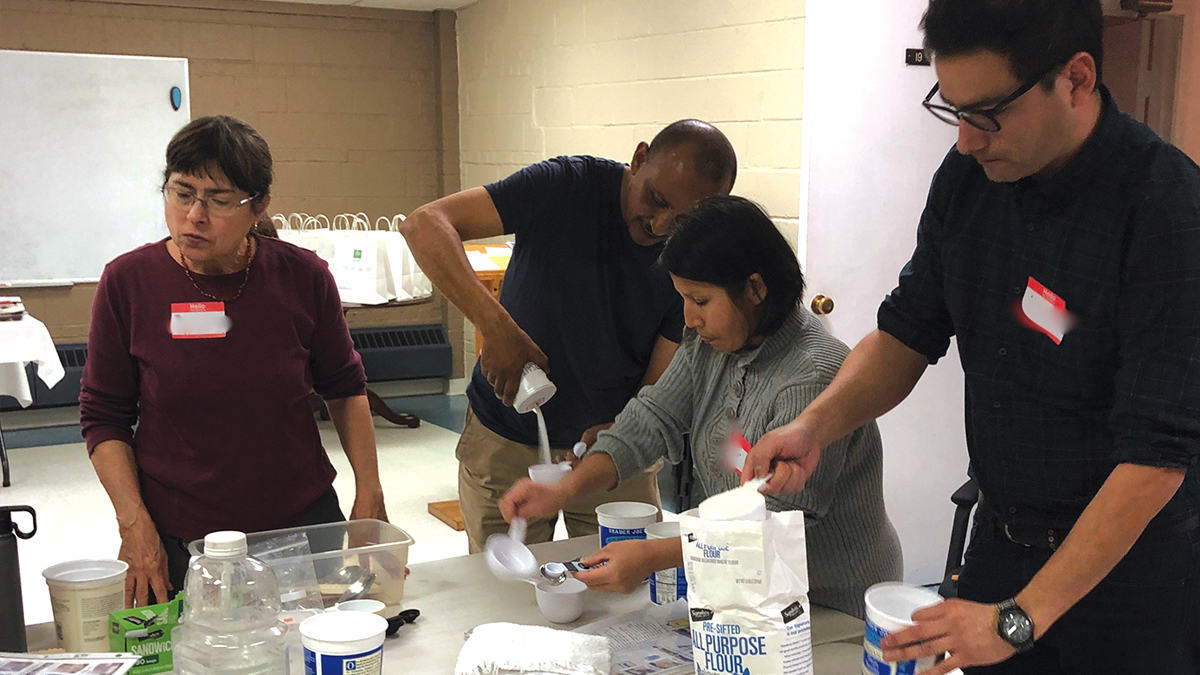The Early Years
Science at Home
“Adults play a central and important role in helping young children learn science,” is one of the key principles in the National Science Teaching Association’s Position Statement on Early Childhood Science Education (2014). The statement notes, “Everyday life is rich with science experiences, but these experiences can best contribute to science learning when an adult prepares the environment for science exploration, focuses children’s observations, and provides time to talk about what was done and seen.”
Connecting science learning experiences between home and school allows adults to support each other in preparing an environment rich with learning opportunities—whether it is a sink full of dishes, a rain puddle, or a water table with tubes and containers. Children’s connections between in-school learning and learning at home are more robust when educators and adult family members communicate about the science experiences and investigations that children are involved in. Family members may share anecdotes about children’s actions, books about a natural phenomenon being discussed at school, or materials for the class to use. A national survey about how parents of young children encourage and take part in their children’s learning found that “most parents indicated that more ideas for science activities, and ideas for doing science with everyday materials would help ‘a lot’ in doing more science at home,” and “reported that having more information about the science that their child should learn would help them do more science at home” (Silander et al. p. 31).

Early childhood educator Anne Lowry recommends a variety of ways for educators to make connections, such as interview questions for family members about a science topic, sending home “thinking questions” for students to discuss with family members, activity packs with a book and an activity to do at home, and gathering data at home, such as measuring snow depth in several spots to create class graphs (2019). See more ideas under References.
Choosing ways to connect with families means knowing something about them. Derman-Sparks and Olsen Edwards (2009) recommend clearly stating your program’s commitment to diversity of all family structures by including images of all kinds of families in books, posters, and puzzles; providing a variety of figurine dolls representing various ethnicities, ages, and genders; and by referring to “family” rather than always saying “parents” or “mom and dad” (p. 115). Families come in all shapes and sizes!
Take A Penny
Objective
To engage families in science at home, such as exploring and talking about the properties of water together (see Supplemental Resources for additional ideas).
- Prepare a message to send home to families that relates to an ongoing science exploration or investigation taking place in the classroom. For example, explorations at the water table, in rain puddles, or while washing hands at the sink may lead to children wondering about the way water behaves. Plan to involve the children in creating the message.
- Use the methods of communication that have worked best, whether paper notes, texts, or email. Consider the possible time periods and materials available to the families for a science exploration, including those not available at school (car wash, swimming pool, visit to natural body of water). If planning a school event, be aware of logistical and resource challenges, such as work schedules that can’t be changed, access to transportation, and lack of money for field trips.
- Ask children, “What about our recent science explorations would you like to talk about with your family?” “What questions could you explore at home?” to help children share their questions and actions they want to try or repeat. Have children draw a picture of the way they used materials at school, or any experience they want to try with their families. Record children’s questions to possibly include in the message. Each child’s work can be part of the message, sent home to that child’s family.
- Tell the children, “So we can all do the same work with our families outside of school time, and talk about it together in school later, I’m going to choose just one activity to send home in a message. Your own drawing and questions will go home with it.” Record their work with photography for later reference or to send home in a digital format.
- Prepare a Family Science Message that will communicate with the families of your students, for example,
Dear families, the children are exploring the properties of water and want to make observations, draw what happens, and talk about it with you. Science is for everyone. I will be sending home a cup and a penny to use in your explorations. Please do the exploration in the next week.
• Fill a cup halfway with water. Push your hand into the water until the water almost over-flows the cup but does not spill. What does the surface of the water look like?
• Drip water onto a penny until the water looks like it might spill. What does the surface of the water look like? Have you seen water behaving this way before?
• Draw a picture and write your ideas and questions about why this happens.
• Send the drawings, ideas, and questions back to school and the class will continue discussing!
- Make the message part of a kit containing a cup and a penny to provide a consistent experience for all families. Not every topic of Family Science Messages will need materials. Send the message first and the materials with a second copy of the message the following day.
When children return, if some have not done the activity at home, arrange for an adult at school to do and talk about the activity with them before discussing as a group.
- Water
- Cup
- Penny
- Communication—note or text home.
Teaching Strategies Elementary



